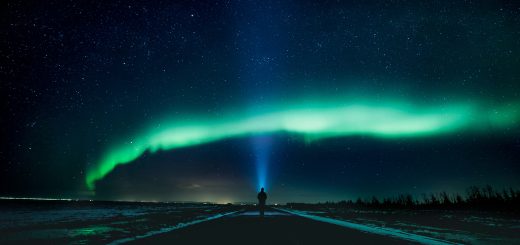Essential Gear for Winter Camping Adventures

Looking for more amazing products? Check out our online store and explore our collection here! Happy shopping!
Before diving in, please note: This post is for informational purposes only. If you’d like to know more about how we approach topics, feel free to check out our friendly Disclaimer Page.
Hey there, amazing readers! 
We’re committed to delivering quality posts, and your support (even just sticking around despite the ads) means everything to us. So, bear with us, and thanks for helping us keep the good vibes rolling. Now, on to the fun stuff!
TRANSLATE BUTTON AT THE END OF THE ARTICLE
Winter camping is a unique and exhilarating experience, offering a chance to immerse yourself in a winter wonderland.
However, the cold weather can pose significant challenges, and having the right gear is crucial for staying warm, safe, and comfortable.
Whether you’re a seasoned winter camper or planning your first trip, this guide will help you gather essential gear to make your winter camping adventure enjoyable and memorable.
1. Choosing the Right Tent
Your tent is your first line of defense against the elements, so selecting the right one is essential.
Here are some key features to look for:
Four-season tents: These are designed to withstand harsher weather conditions and provide better insulation.
They typically have a sturdier frame to handle wind and snow.
Good ventilation: Look for tents with vents to minimize condensation buildup, which can occur when warm air meets the cold tent fabric.
Snow flaps: Some tents come with snow flaps that can help anchor the tent in place and keep snow from blowing inside.
When I first went winter camping, I opted for a three-season tent, and I quickly learned that a four-season tent makes a world of difference in harsh weather.
2. Insulated Sleeping Bag
A quality sleeping bag is crucial for staying warm during chilly nights.
Here are a few things to consider:
Temperature rating: Choose a bag rated for temperatures lower than what you expect to encounter.
I always go for one with a lower limit of at least ten degrees below the forecasted temperature.
Insulation type: Down insulation is lightweight and compressible but loses insulation properties when wet.
Synthetic insulation, on the other hand, retains warmth even when damp.
Mummy shape: A mummy-shaped sleeping bag hugs your body, reducing heat loss and keeping you warmer.
I remember my first winter camping trip when I underestimated the cold—upgrading to a better sleeping bag made my nights much cozier!
3. Sleeping Pad or Insulation Layer
Using a sleeping pad not only provides comfort but also insulates you from the cold ground.
Here’s what to look for:
R-value: This indicates the pad’s thermal resistance.
For winter camping, aim for a pad with an R-value of at least 4 or higher.
Thickness: Thicker pads tend to provide better insulation, so consider a 2.5 to 3-inch thickness for added comfort.
Inflatable vs. foam: Inflatable pads are lightweight and packable but can be punctured.
Foam pads are more durable but bulkier.
I often use a combination of an inflatable pad and a closed-cell foam pad for maximum warmth and comfort!
4. Appropriate Clothing Layers
Dressing for winter camping involves a layering system that helps regulate your body temperature.
Here’s how to do it right:
Base layer: Start with moisture-wicking thermal underwear to keep sweat away from your skin.
Look for materials like merino wool or synthetic fabrics.
Insulating layer: A fleece or down jacket traps warmth without adding too much bulk.
I usually opt for a lightweight down jacket that I can compress for easy packing.
Outer layer: A waterproof and windproof shell jacket and pants protect you from the elements.
Look for breathable materials to help regulate moisture buildup.
Remember to pack extra socks, gloves, and hats.
I can’t tell you how many times a fresh pair of socks saved my day!
5. Sturdy Footwear
Your feet deserve special attention in winter camping.
Here’s what to look for in winter footwear:
Insulated boots: Choose waterproof and insulated boots rated for colder temperatures.
A good pair will keep your feet warm and dry.
Traction: Look for a sole with deep lugs for better grip on icy or snowy terrain.
Gaiters: These can help keep snow and moisture out of your boots, especially when trudging through deeper snow.
I once wore non-insulated boots on a winter hike and regretted it the entire time!
Investing in quality footwear can make all the difference.
6. Cooking Gear
Preparing meals in the winter can be a challenge, but having the right cooking gear can make it easier.
Consider these essentials:
Portable stove: A winter-rated camp stove is essential for cooking in colder temperatures.
Look for stoves that can handle lower temperatures and have a reliable fuel source.
Cookware: Bring lightweight pots and pans that can withstand high heat.
A pot with a lid helps to retain heat while cooking.
Biodegradable soap: This makes cleaning dishes easier while being environmentally friendly.
On my first winter trip, I learned the importance of cooking warm meals—nothing beats a hot bowl of soup after a day in the cold!
7. Fire Starting Supplies
A campfire can provide warmth and a place to cook, making it an essential part of winter camping.
Be prepared with:
Firestarter: Bring waterproof matches, lighters, or fire starters that ignite easily in wet conditions.
Tinder and kindling: Pack dry materials like cotton balls or dryer lint for starting the fire, along with small twigs or dry leaves.
Firewood: Check the regulations at your campsite regarding gathering firewood; it’s often best to bring your own.
I can still remember the warmth of gathering around a fire with friends on a cold winter night—just be sure to keep the fire contained!
8. Navigation Tools
When winter camping, it’s easy to lose your way in the snow.
Here’s how to navigate safely:
Map and compass: Always carry a physical map and a compass, as GPS devices can fail in remote areas or extreme cold.
GPS device: If you prefer technology, a handheld GPS unit can be useful, but have a backup just in case.
Know the route: Familiarize yourself with the area before your trip.
Having a plan helps avoid getting lost in snowy conditions.
On my first winter camping trip, having a compass helped us find our way back when visibility dropped—navigation is key!
9. Safety and First Aid Kit
Safety should always be a top priority.
Here’s what to include in your first aid kit:
Basic supplies: Include band-aids, antiseptic wipes, gauze, adhesive tape, and pain relievers.
Emergency blanket: A compact, reflective emergency blanket can help retain body heat in a pinch.
Personal medications: Don’t forget any necessary prescriptions or personal items.
I’ve seen firsthand how valuable a well-stocked first aid kit can be—better to be safe than sorry!
10. Hydration System
Staying hydrated in the winter is just as important as in the summer.
Here are some hydration tips:
Insulated water bottles: Invest in double-walled, insulated water bottles to prevent your water from freezing.
Water treatment system: If you plan to use snow or ice for water, bring a water filter or purification tablets to ensure it’s safe to drink.
Warm drinks: Carrying hot drinks in a thermos can provide warmth and hydration at the same time.
During my first winter camping trip, sipping hot chocolate while warming up by the fire was a highlight!
11. Lighting Options
With shorter daylight hours in winter, having reliable lighting is crucial.
Here’s what to consider:
Headlamps: These are great for keeping your hands free while navigating or cooking in the dark.
Lanterns: A lightweight, battery-operated lantern can illuminate your campsite and create a cozy atmosphere.
Extra batteries: Always bring spare batteries for your lighting devices to avoid being caught in the dark.
I once forgot extra batteries on a camping trip and learned my lesson the hard way—always be prepared!
12. Packing Gear and Extras
Finally, packing efficiently is essential for winter camping.
Here are some tips:
Dry bags: Use waterproof dry bags to keep your gear organized and protected from snow and moisture.
Backpack: A sturdy, weather-resistant backpack is essential for carrying your gear.
Look for one with a hip belt for extra comfort.
Emergency supplies: Always carry an emergency whistle, multi-tool, and additional food in case of unexpected situations.
On one trip, I packed my gear in dry bags, and they saved me from a wet disaster when my backpack tipped over in the snow!
Conclusion
Winter camping can be an incredible experience filled with breathtaking views and memorable moments.
With the right gear and preparation, you can enjoy the beauty of winter while staying warm and safe.
Remember to research your campsite, plan meals, and prioritize safety, and you’ll be well on your way to a fantastic winter adventure.
So bundle up, grab your gear, and hit the snowy trails—you’re in for an unforgettable journey!

The Enlightenment Journey is a remarkable collection of writings authored by a distinguished group of experts in the fields of spirituality, new age, and esoteric knowledge.
This anthology features a diverse assembly of well-experienced authors who bring their profound insights and credible perspectives to the forefront.
Each contributor possesses a wealth of knowledge and wisdom, making them authorities in their respective domains.
Together, they offer readers a transformative journey into the realms of spiritual growth, self-discovery, and esoteric enlightenment.
The Enlightenment Journey is a testament to the collective expertise of these luminaries, providing readers with a rich tapestry of ideas and information to illuminate their spiritual path.
Our Diverse Expertise
While our primary focus is on spirituality and esotericism, we are equally passionate about exploring a wide range of other topics and niches 

To ensure we provide the most accurate and valuable insights, we collaborate with trusted experts in their respective domains 
Our blog originally focused on spirituality and metaphysics, but we’ve since expanded to cover a wide range of niches. Don’t worry—we continue to publish a lot of articles on spirituality! Frequently visit our blog to explore our diverse content and stay tuned for more insightful reads.
Hey there, amazing reader! 
Check out our store here and take a peek at some of our featured products below! Thanks for being awesome!











